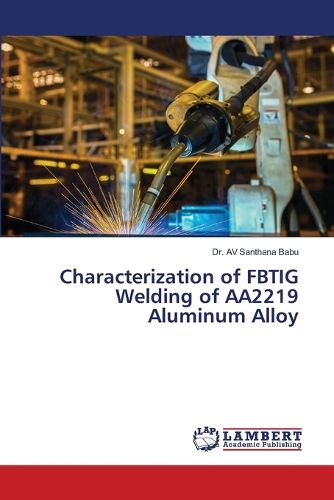Readings Newsletter
Become a Readings Member to make your shopping experience even easier.
Sign in or sign up for free!
You’re not far away from qualifying for FREE standard shipping within Australia
You’ve qualified for FREE standard shipping within Australia
The cart is loading…






Tungsten Inert Gas (TIG) welding is commonly used to join reactive materials such as alloy steel, stainless steel, magnesium alloys and aluminum alloys. However, limitation of the process is in its penetration capability. To overcome this limitation, two newer processes viz. Activated Flux TIG (ATIG) and Flux Bounded TIG (FBTIG) are investigated to identify the better process for aluminum alloy welds. On comparing the quality of ATIG and FBTIG welds, arc wandering is observed in ATIG welds whereas FBTIG welds are free from such arc wandering and possess aesthetic look. On detailed micro structural investigations of both ATIG and FBTIG welds, it is found ATIG welds are prone for cracks because of the presence of coarser grains in the weld zone and also due to excessive grain boundary liquation. To predict and control the FBTIG weld bead geometry, mathematical models are developed to correlate controllable FBTIG process variables with bead geometry to weld AA 2219 T87 aluminum alloy by using Design of Experiments based on four factor five level central composite rotatable design. FBTIG welds are characterized for tensile properties and Stress Corrosion Cracking resistance.
$9.00 standard shipping within Australia
FREE standard shipping within Australia for orders over $100.00
Express & International shipping calculated at checkout
Tungsten Inert Gas (TIG) welding is commonly used to join reactive materials such as alloy steel, stainless steel, magnesium alloys and aluminum alloys. However, limitation of the process is in its penetration capability. To overcome this limitation, two newer processes viz. Activated Flux TIG (ATIG) and Flux Bounded TIG (FBTIG) are investigated to identify the better process for aluminum alloy welds. On comparing the quality of ATIG and FBTIG welds, arc wandering is observed in ATIG welds whereas FBTIG welds are free from such arc wandering and possess aesthetic look. On detailed micro structural investigations of both ATIG and FBTIG welds, it is found ATIG welds are prone for cracks because of the presence of coarser grains in the weld zone and also due to excessive grain boundary liquation. To predict and control the FBTIG weld bead geometry, mathematical models are developed to correlate controllable FBTIG process variables with bead geometry to weld AA 2219 T87 aluminum alloy by using Design of Experiments based on four factor five level central composite rotatable design. FBTIG welds are characterized for tensile properties and Stress Corrosion Cracking resistance.